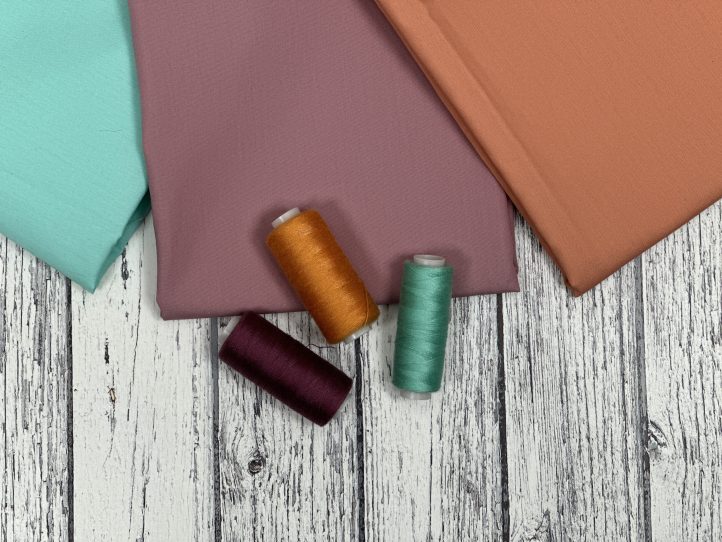
There is one thing upon which all seasoned quilters will agree – your first trip to the quilt fabric store is a bit scary! I remember mine very well indeed (it was a while ago…). I was new to the art of quilt making and I had ten Australian dollars. I wondered what I could buy with it. Can I just say that I have never left a shop faster! The choices were overwhelming, there was a whole new language to learn and I hadn’t even thought about interfacing. And ten Australian dollars, even back in the day, barely buys enough fabric to make a potholder!
Fast forward thirty years and here is a distilled story about what I have learned when choosing fabric for a quilt.
For a start, there are two ways of acquiring fabric: either you go into the quilt store with a definite list and buy only what is needed for a specific project or you build a stash so that you can make things without leaving the house. Most quilt makers fall somewhere between the two. If you have seen a quilt pattern that you absolutely love, a great part of the love is often the fabrics that the maker has chosen. The pattern comes into it too, of course, but the fabrics stand out. When this happens, your list is pretty much written for you in the magazine needs list and you can head off and source the fabrics.
But how might you build a quilt from scratch? Do you need a stash? How do you know which fabrics work together?
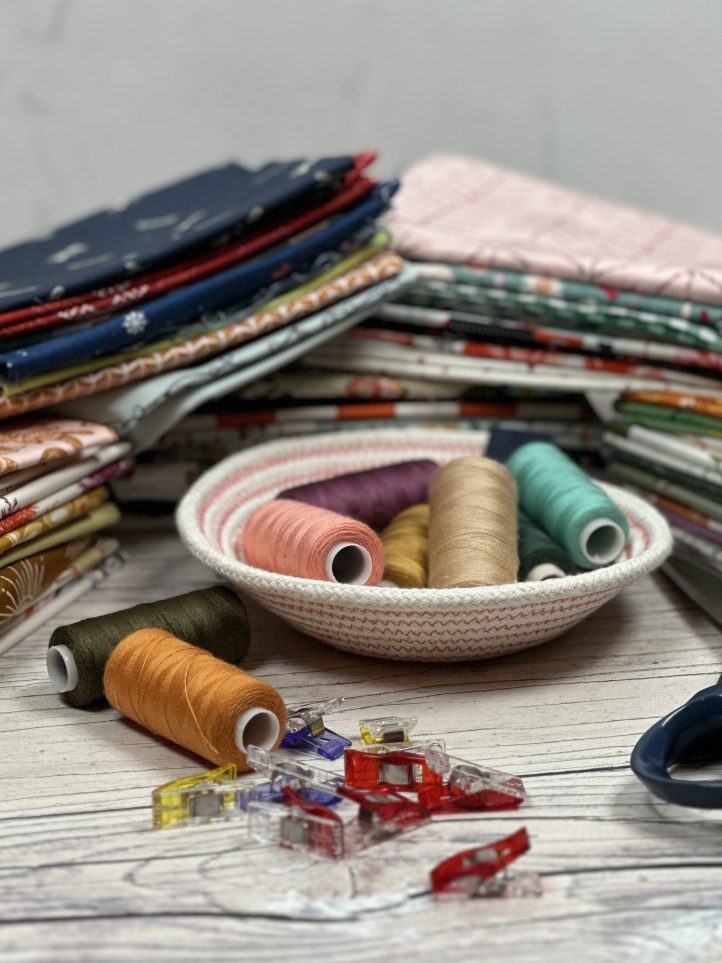
Finding Fabric
In my (now very practiced opinion), some sort of stash is not only lovely to have, it is also pretty inevitable. You will see bargains, have birthday wish lists, visit shows and have offcuts and scraps. These all feed the stash and if you choose carefully, you would be amazed at what you can make from what you have. From here on in, the only thing to do is to know which fabrics look great together and there are a few fun ways to get there.
You could join a club where fabric (often beautifully curated) is delivered to you each month. This is a great way to practice ‘seeing’ the fabric: what works and what doesn’t and how unexpected combinations make each other glow.
When you are starting out, watch out for themed packs in the shops. Here again, it is a learning curve about what looks great together. The experts who put these packs together know what they are doing and every major fabric house has a curated line.
Buy Fat Quarters and other precuts, which represent small investments. A Fat Quarter is a quarter yard (18” x 20” usually although the size can vary) but instead of a thin strip (also a quarter yard) it is actually a half yard cut into two down the middle giving you an almost- square pieces of fabric. You can do a lot with a fat quarter and for such a small piece of fabric, they go a very long way. You can buy precuts in strips and squares too. They all have their uses but in my opinion, few are as versatile as a fat quarter. You can cut strips and squares from a fat quarter but you cannot easily cut useable bias tape from a 10” square.
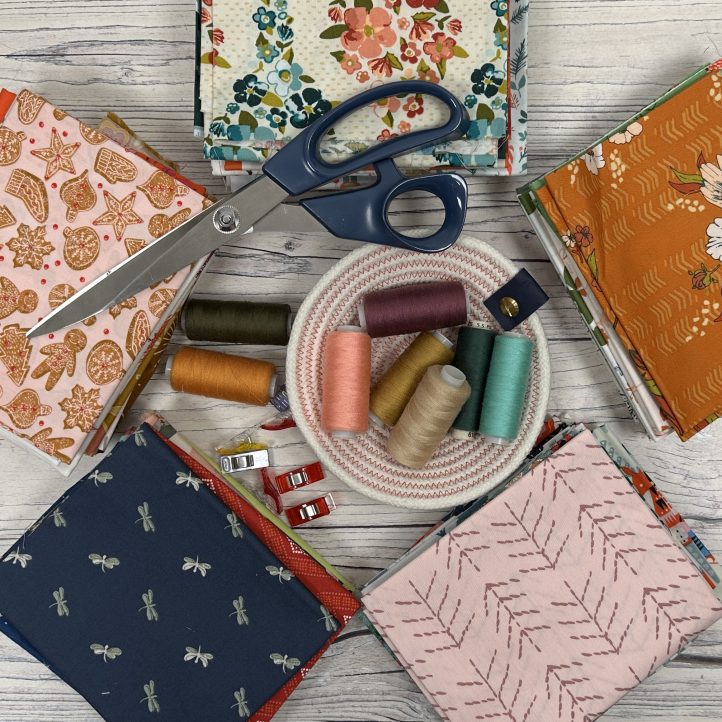
Factor in the basics when you are building your quilt stash. More about this later on but when you are buying, avoid choosing prints and nothing else. Prints are lush and they can go together beautifully but if all you have in your basket are hero prints, all together in a quilt they will look far too busy and you may strain to see the actual pattern of the patchwork. A great quilt fabric stash also needs solids (fabric of all one color), blenders (a coordinating support act to marry beautifully with the hero prints), strips and dots. Throw in a few plaids too.
Connect with other quilters and arrange stash swaps. You will get very bored with being virtuous about using all of your scraps after a while. Having a friend to swap with means that you get fresh fabrics and the fresh ideas that come with them.
Tips for Choosing Quilt Colors
Once you have built a stash, it will grow quite quickly, which means that keeping track of it is important. I tend to sort mine by colors overall and I store the solids separately, also in color order. This makes it easy to find what I need when I am planning a project. I store the solids separately because they can be used on their own to make a quilt whereas the hero prints and blenders, stripes and plaids tend to be used together in different combinations.
Organization is important for scraps too. Iron your scraps as you finish a project and consider cutting them to useful sizes such as 2 1/2” strips or squares in various sizes. Then they can be stored knowing that some of the work is done. Get rid of anything that you know you won’t use. Sometimes a curated pack contains a print that is just not ‘you’. Put it aside to swap or donate.
Sometimes we see a quilt in a magazine that is just perfect. The pattern is lovely and the size is exactly as needed. But the fabrics? No. Nothing about the fabric would work in your home. This is where a bit of style and a lot of translating needs to be done.
First of all, even though you have a strong sense of style when it comes to your house and clothes, it might take a while for your ‘quilt style’ to develop. If you are not sure about your style, there are two easy places that you can look: your wardrobe and your home. Does your wardrobe contain stripes and angular geometrics or do you go out upholstered completely in Liberty florals? Is your house full of orange accents or is pink banned? These are great clues for you to start translating quilt fabrics.
Back to our hypothetical quilt. Is it all florals and you would hate that? Try a geometric swap like triangles, bold stripes or a determined plaid like a black and white houndstooth. Where there is an alarming pink, consider earth tones like mustard or brick. Loathe polka dots? Search around for a blender with a small fleck instead.
When you are starting out, it can be a good idea to take the picture of your quilt- to- be into a fabric store and ask the staff what they might recommend. While you are there, look at any sample quilts on display. What do you love about them? What stands out as the biggest plus/minus?
Let’s just suppose that you have a bit of a stash and you have a good idea of what you like and don’t like. How do you choose the five or six fabrics that go into the average quilt? Choose your hero print first. You only have one hero in a quilt (especially a smaller one) and because heroes tend to have rather large egos, you would not put them together as a rule.
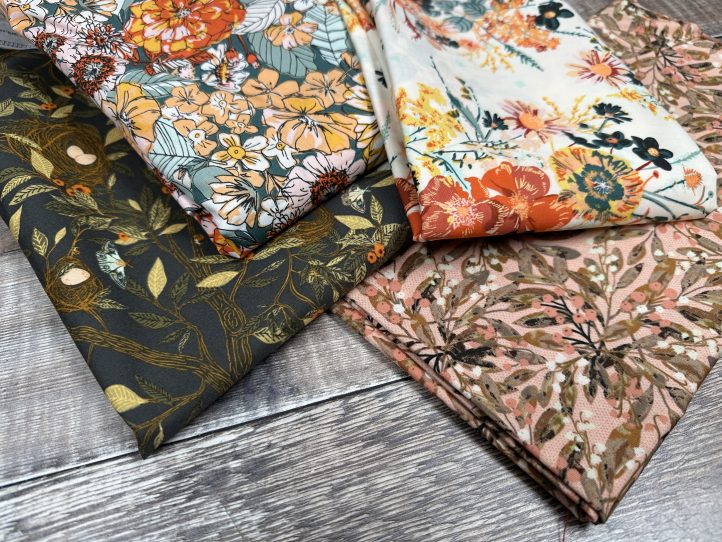
Next thing is to look very closely at your hero and identify the colors. Some colors will be used more than others. My top tip is to find the color that is used least in the hero and use that most in the blenders. This is a simple and useful way to balance the colors. If your hero is a floral with a navy blue background and you choose navy blue for the blenders and solids (depending on what is needed), the hero will disappear. If your hero is a floral with a navy background, green leaves and tiny coral pink centers to some of the flowers, choose coral pink as your major blender and green second. This will support the hero and the coral pink blender will bring out the flower centers without overwhelming everything around it. Is there any black in your hero print? Don’t ignore it; consider using black on the binding to tie everything together.
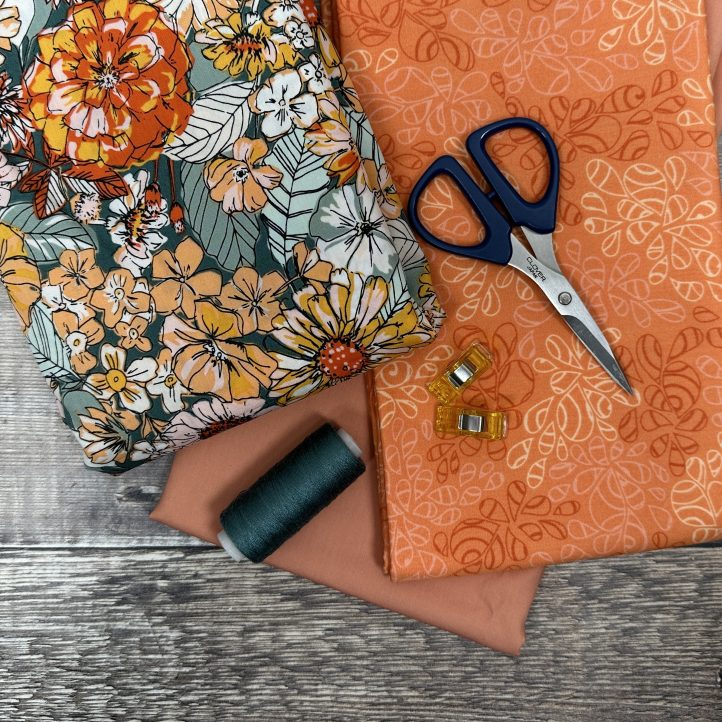
Create a Swatch Journal
Another top tip worth mentioning here is to keep a journal with some swatches in. Fabrics go out of fashion just like anything else and although some manufacturers, Art Gallery Fabrics for example, keep their fabrics in the marketplace for slightly longer than others, it is still a sad day when you realize that a favorite is no longer available.
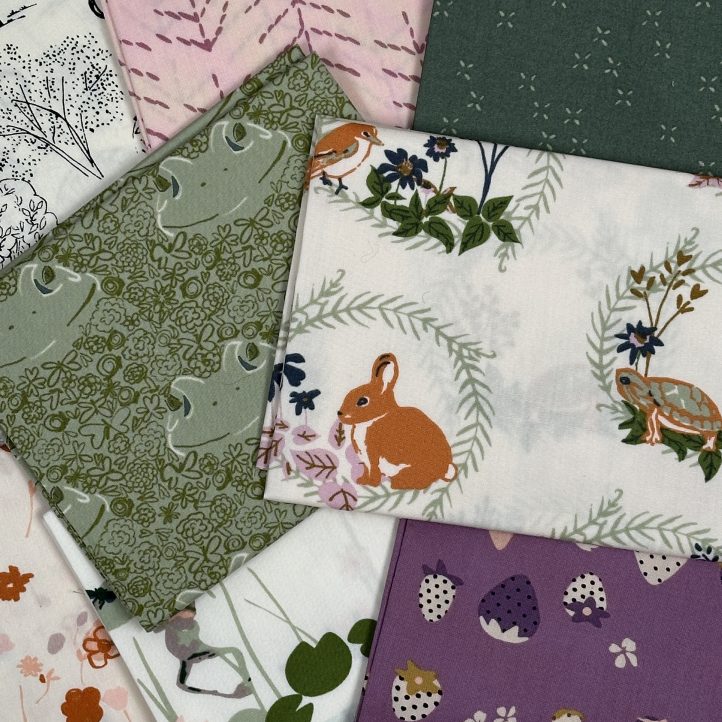
A swatch journal that can be taken to the quilt store, meaning that you can find something similar and enlist the help of the shop keepers. They are often very knowledgeable indeed but it is a lot to ask them to know a print from a description. Show a swatch of a favorite, however, and it is odds on that they can find a great alternative with the same vibe.
Make sure that your swatch journal includes the supporting fabrics for your favorite too. It can really make choosing easier.

Whichever way you approach it, choosing fabric is a worthwhile skill which takes a little time to learn. After all, it is a whole career for fabric curators. The most important thing is to know what you like. The next thing is to know what you don’t like. Actually, this second point can cut down half the battle! The rest is just to spend time in the fabric shops and see what jumps out. Immerse yourself in the world of fabric and the expertise will develop from there.
